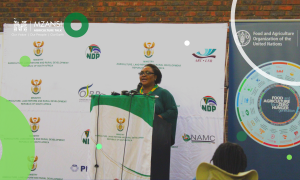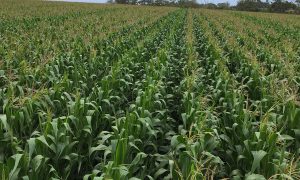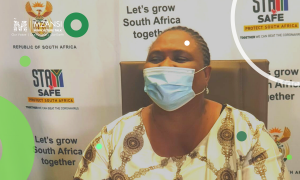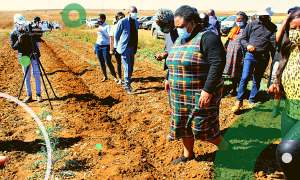The unpredictability of rain during 2020 has elevated calls among water scientists for government to make effective use of remote sense technology to gauge rain precisely.
“The key factors that affect water availability include climatic variability and change, population growth that reduces per capita water availability, contamination that reduces usable water supplies, physical overuse of a stock such as groundwater overdraft and technological factors,” said Wandile Nomquphu of the Water Research Commission (WRC).
With high hot temperatures expected, there was hope that the summer season could bring anticipated volumes for the deciduous and horticulture industries.
Hortgro said the drought conditions plaguing the Little Karoo for the last number of years was not fully broken but was expecting slight improvement in water availability with things ’looking better compared to the previous 2 seasons for this region’.
The Agricultural Research Council (ARC) climate monitoring unit concurred with the analysis, stating that the month of September provided good rains and it expected further pick up.
“Rainfall should start to pick up from October to December 2020 and farmers are advised to consider various cropping strategies based on the soil water content. Rainfall could speed up regeneration of pasture yields, but precautionary measures should be taken in cases of localized flooding, which can wash away seeds or damage developing crops,” it said.
However, the WRC raised concerns on the rainfall gauge networks as they did not accurately capture the current rain fields.
According to Nomguphu, rain gauge networks have been steadily declining over the years. “Research currently indicates that rain gauge network in South Africa consists of approximately 1200 gauges compared to approximately 3800 rain gauges in the 1970s.”
The South African Weather Service, Agricultural Research Council and the Department of Water and Sanitation (DWS) were mainly the 3 institutions collecting limited rainfall data next to major dams for water balances.
For the agricultural sector, it was critical to continuously assess the availability of water resources as the limited rainfall gauge networks had the impact to affect farmers yields and livestock in the future.
“Large parts of the country have become ‘ungauged’ and thus their water stores and flows cannot be assessed with certainty. The high cost of traditional hydrological monitoring is always cited as the main reason that hamstrings the sustenance and expansion of in situ or ground-based observation networks,” added Nomguphu.
WRC has gone on further to lament the non-use of state-of-the-art national weather radar network bought by the erstwhile Department of Water and Environmental Affairs for approximately R240 million. It had urged the government to utilise this national radar network to ‘vigorously pursue the integration of the rain gauge networks and weather radar data for hydrological applications.’
The package radar network comes with a nine (9) single-polarised S-band radars, one (1) dual-polarised S-band radar, two (2) mobile X-band research radars and five (5) C-band radars. South Africa should.
Such use of technology was at the disposal of the South African Weather Service but it too struggled to use it.
“Only 54.3% of the radar data collected over the last 12 months is available but most of it is unusable as most of the radars are not calibrated. The calibration of the radar is hamstrung by the lack of technical capacity and resources within South African Weather Services (SAWS) which struggles to keep the radars operational,” Nomguphu’s research discovered.




















